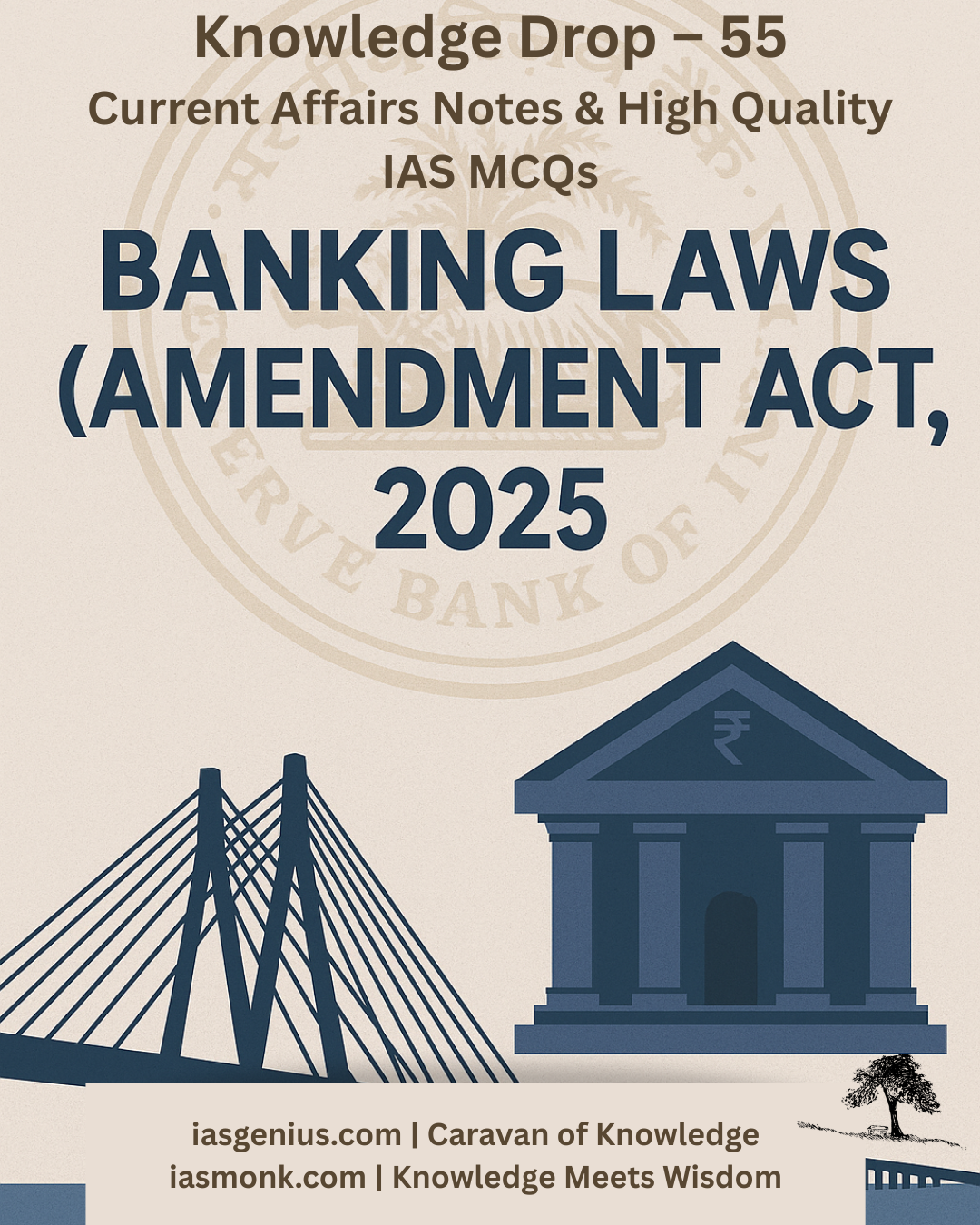
🧭May 28, 2025, Post 3: The Bench Must Rise: Why the Supreme Court Needs to Shed its Chief-Centric Roots | High Quality Mains Essay | Prelims MCQs
The Bench Must Rise: Why the Supreme Court Needs to Shed its Chief-Centric Roots

NATIONAL HERO
Post Date: May 28, 2025
Syllabus: GS Paper 2 – Polity and Governance
Category: Supreme Court / Judicial Reform / Institutional Transparency
🎯 Thematic Focus:
Judicial Transparency, Institutional Reforms, Role of the Chief Justice of India
🌿 Intro Whisper:
When the scales of justice tilt too much toward one figure, even the goddess of law must pause — for democracy thrives only when every robe shares equal weight.
🗝️ Key Highlights
- Justice A.S. Oka’s Reform Call: Former SC judge urged the Court to transition away from a CJI-dominated structure to a more institutionalised and democratic setup.
- Master of the Roster Doctrine: Reaffirmed in Shanti Bhushan v. SC (2018) — the CJI alone decides which judge hears which case, when it is listed, and how benches are formed.
- Administrative Control: As per State of Rajasthan v. Prakash Chand (1998) — the CJI has dominant control over court administration, including work allocation and registry.
- Constitution Bench Monopoly: The CJI decides when to constitute 5-judge Constitution Benches, and often presides over them, centralising influence.
- Transparency Deficit: This structure results in case listing opacity, delayed hearings on critical matters, and weakened collegiality within the judiciary.
- Strengthening the Backbone: Justice Oka also highlighted the need to empower the lower judiciary, the essential frontline of India’s justice system.
📚 Concept Explainer
🧾 Why Is It Called a “CJI-Centric Court”?
In practice, the Supreme Court’s internal working — from bench formation to case scheduling — is concentrated in the hands of the Chief Justice. This undermines judicial equality among the other judges who are constitutionally “equal” in authority.
🔎 Previous Transparency Moves:
- Public Roster (2018): Introduced to reveal judge-case allocations.
- RTI Landmark (2019): In Subhash Chandra Agarwal v. SC, the SC held that the CJI’s office is subject to RTI, increasing public accountability.
- Online Publication of Collegium Decisions: Details of judge appointments are now shared publicly.
🔧 Suggested Reforms:
- Committee-Based Case Management: Inclusion of senior judges in decisions on bench constitution, listing, and administration.
- AI-Driven Case Allocation: Use of algorithmic tools for unbiased, time-bound listing.
- Shared Leadership for Constitution Benches: A panel of judges instead of the sole discretion of the CJI should decide these sensitive matters.
🗺️ GS Mains Mapping
- GS Paper 2:
- Separation of Powers between various organs
- Structure, Organization, and Functioning of the Judiciary
- Transparency and Accountability in Governance
- Challenges of Judicial Reforms in India
💭 A Thought Spark — by IAS Monk
“A court is not merely a chamber of wisdom, but a hall of shared voices — and no echo of justice should depend on a single gavel.”
High Quality Mains Essay For Practice :
Word Limit 1000-1200
The Need for an Institution-Centric Supreme Court: Breaking Away from Chief Justice-Centric Functioning
Introduction
India’s Supreme Court has long stood as a symbol of justice, liberty, and constitutional morality. It is the final interpreter of the Constitution, protector of fundamental rights, and arbiter in disputes of national importance. Yet, behind the grandeur of its pronouncements lies a structural paradox: while the court is envisioned as a collegial body of equals, in practice it often functions as a Chief Justice-centric institution. This centralisation of administrative and functional authority has raised concerns about transparency, democratic functioning, and the erosion of judicial collegiality.
The recent observations of former Supreme Court judge Justice A.S. Oka have reignited the debate about the internal functioning of the apex court. His call for democratic institutionalism within the judiciary signals a growing recognition that the independence of the judiciary must be complemented by institutional balance and administrative transparency.
Understanding the CJI-Centric Model
The centrality of the Chief Justice of India (CJI) in the Supreme Court’s functioning stems from legal precedents and administrative conventions that vest enormous power in one individual. This includes:
1. Master of the Roster Doctrine
The doctrine gives the CJI sole discretion to decide:
- Which case is heard by which bench;
- Which judges are assigned to which benches;
- When and how a case is listed for hearing.
This was reaffirmed in Shanti Bhushan vs. Supreme Court of India (2018), where the court held that the Chief Justice is the “Master of the Roster,” and this role is integral to the administrative functioning of the court.
2. Administrative Dominance
In State of Rajasthan v. Prakash Chand (1998), the Supreme Court clarified that while all judges are equal in matters of adjudication, the Chief Justice holds exclusive administrative authority, including control over:
- The court registry,
- Allocation of work among judges,
- Case management decisions.
3. Control Over Constitution Benches
Even though the Constitution mandates a minimum of five judges for a Constitution Bench, the CJI alone decides:
- When to constitute such a bench,
- Who will be part of it,
- Whether the matter requires a Constitution Bench at all.
This near-monopoly in decision-making has deep implications for institutional balance.
Consequences of a CJI-Centric Judiciary
The centralisation of power in the hands of one person, however meritorious, raises significant institutional concerns:
1. Lack of Transparency
The opacity surrounding how cases are listed or delayed creates distrust. Even fellow judges may remain unaware of the logic behind bench formation, affecting both fairness and morale.
2. Justice Delayed on Crucial Matters
Cases of national or constitutional significance — including electoral bonds, Article 370, or hate speech — have faced inordinate delays. These are often attributed to the discretionary power of the CJI in deciding when and whether to list such cases.
3. Weakening of Collegiality
When a single figure exercises unilateral control, it undermines the constitutional principle that all judges are equal. Judicial dialogue and shared responsibility give way to hierarchy, damaging the Court’s institutional spirit.
4. Erosion of Public Trust
The perception of arbitrariness in case listing, judge allocation, and delays can fuel public skepticism about the impartiality of justice. Transparency and shared decision-making are crucial to uphold the Court’s moral authority.
Steps Towards Greater Transparency
To the credit of the judiciary, recent years have witnessed incremental but important steps toward internal reform:
1. Introduction of Public Roster (2018)
To address criticism, the Supreme Court made case allocation public through a roster system, allowing lawyers and litigants to view judge-wise jurisdiction.
2. CJI’s Office Under RTI (2019)
In Subhash Chandra Agarwal v. Supreme Court, a five-judge Constitution Bench ruled that the office of the CJI is subject to the Right to Information (RTI). This was a landmark judgment signaling the judiciary’s openness to transparency.
3. Publishing Collegium Resolutions
The Supreme Court now publishes collegium resolutions on judge appointments and transfers, providing some insight into internal deliberations.
While these steps are important, they are not sufficient to address the structural concentration of power within the top court.
Reforms for an Institutionalised Supreme Court
The time is ripe for systemic reforms that prioritize shared responsibility, algorithmic transparency, and decentralised governance within the Court. Key suggestions include:
1. Committee-Based Decision-Making
Instead of relying solely on the CJI, decisions regarding:
- Constitution Bench formation,
- Case listing,
- Administrative matters,
should be taken by a committee of senior-most judges. This ensures institutional input and protects against arbitrariness.
2. Automated Case Listing
Technology must be harnessed to automate case listings through a transparent, algorithm-based system. An AI-enabled scheduling software can use objective criteria like urgency, seniority of filing, and constitutional importance.
3. Collegiality in Bench Formation
A panel of senior judges should determine the composition of Constitution Benches and the timing of hearings. This would depersonalize case allocation and restore balance.
4. Empowering the Registry and Registrar
The Court registry must be administratively strengthened to function autonomously, with independent oversight, thereby reducing dependence on the CJI’s office for operational control.
5. Strengthening the Lower Judiciary
Justice A.S. Oka’s call to empower the district judiciary is crucial. These courts are the first point of contact for most citizens and require:
- More judges,
- Better infrastructure,
- Speedier recruitment and training,
- Greater financial autonomy.
Comparative Lessons from Other Jurisdictions
In the United States, while the Chief Justice of the Supreme Court holds ceremonial and procedural seniority, bench composition and case allocation are decided collectively.
In Germany’s Federal Constitutional Court, two senates (benches) operate independently, and internal administrative decisions are governed by detailed procedural rules.
These models underscore that a powerful judiciary need not rely on centralised authority, but on well-defined and inclusive institutional processes.
Challenges to Reform
Institutional reform is often the hardest kind, especially when it demands voluntary dilution of power by those who currently wield it. Resistance to change may come from:
- Conservative interpretations of judicial independence,
- Institutional inertia,
- Lack of external oversight mechanisms.
However, reform must be viewed not as dilution, but strengthening of judicial independence through accountability and equality.
Conclusion
The Supreme Court of India stands as the final fortress of constitutionalism, but even fortresses must be transparent, balanced, and democratic in their internal design. Concentration of power in the office of the Chief Justice — while historically functional — has become a bottleneck in today’s complex judicial ecosystem.
Justice Oka’s call is not merely administrative. It is a philosophical plea to reimagine the Supreme Court as a collective of equals, bound by procedure, transparency, and institutional integrity. As India continues its democratic journey, its highest court must mirror the very values it seeks to protect — equality, fairness, and accountability.
The transition from a Chief Justice-centric court to an institutionally balanced one will not be easy, but it is necessary — for the sake of justice, and for the promise of the Constitution.
Closing Quote
“An institution is only as strong as its willingness to share power. Where justice is shared, trust is born.” — IAS Monk
Target IAS-26: Daily MCQs :
📌 Prelims Practice MCQs
Topic: Why the Supreme Court Needs to Shed its Chief-Centric Roots
MCQ 1 – Type 1: How many of the above statements are correct?
Consider the following statements regarding the role of the Chief Justice of India (CJI) in the Supreme Court:
1. The CJI has exclusive powers to constitute Constitution Benches and assign judges to them.
2. The Master of the Roster doctrine legally empowers the CJI to allocate cases and benches.
3. The Constitution explicitly defines the CJI as the administrative head of the judiciary.
4. All administrative decisions in the Supreme Court require a consensus of all judges.
How many of the above statements are correct?
A) Only one
B) Only two
C) Only three
D) All four
🌀 Didn’t get it? Click here (▸) for the Correct Answer & Explanation
✅ Correct Answer: B) Only two
🧠 Explanation:
1) ✅ True – Constitution Bench formation is under the CJI’s discretion, as currently practiced.
2) ✅ True – The Master of the Roster doctrine was reaffirmed in 2018.
3) ❌ False – The Constitution does not define the CJI’s administrative role; it evolved through precedent.
4) ❌ False – Administrative decisions are made unilaterally by the CJI, not collectively.
MCQ 2 – Type 2: Two Statements Based
Consider the following statements:
1. In 2019, the Supreme Court ruled that the CJI’s office is exempt from the RTI Act to protect judicial independence.
2. The 2018 public roster system was introduced to make bench and case allocation more transparent.
Which of the above statements is/are correct?
A) Only 1 is correct
B) Only 2 is correct
C) Both are correct
D) Neither is correct
🌀 Didn’t get it? Click here (▸) for the Correct Answer & Explanation
✅ Correct Answer: B) Only 2 is correct
🧠 Explanation:
• 1) ❌ False – The Court ruled that the CJI’s office is subject to the RTI Act.
2) ✅ True – The public roster system was introduced in 2018 to promote transparency.
MCQ 3 – Type 3: Which of the statements is/are correct?
Which of the following statements about reforms proposed in the Supreme Court’s functioning are correct?
1. Use of AI and algorithms for automatic listing of cases.
2. Inclusion of senior judges in deciding Constitution Bench composition.
3. Creation of a parliamentary oversight committee to supervise judicial appointments.
4. Decentralisation of administrative powers from the CJI to internal court committees.
Select the correct code:
A) 1, 2 and 4 only
B) 2 and 3 only
C) 1, 3 and 4 only
D) 1, 2, 3 and 4
🌀 Didn’t get it? Click here (▸) for the Correct Answer & Explanation
✅ Correct Answer: A) 1, 2, and 4 only
🧠 Explanation:
1) ✅ True – Algorithmic case listing is a suggested reform.
2) ✅ True – Senior judges forming a panel is part of the reform model.
3) ❌ False – Parliamentary oversight of judiciary appointments is not a reform suggested in this context.
4) ✅ True – Internal court committees are recommended for administrative decentralisation.
MCQ 4 – Type 4: Direct Fact
Which of the following Supreme Court judgments reaffirmed the Chief Justice’s exclusive authority as “Master of the Roster”?
A) Kesavananda Bharati v. State of Kerala (1973)
B) Shanti Bhushan v. Supreme Court of India (2018)
C) Subhash Chandra Agarwal v. Supreme Court of India (2019)
D) S.R. Bommai v. Union of India (1994)
🌀 Didn’t get it? Click here (▸) for the Correct Answer & Explanation.
✅ Correct Answer: B) Shanti Bhushan v. Supreme Court of India (2018)
🧠 Explanation:
•This case reaffirmed that the CJI alone has the authority to allocate cases and constitute benches, under the doctrine of “Master of the Roster”.
















